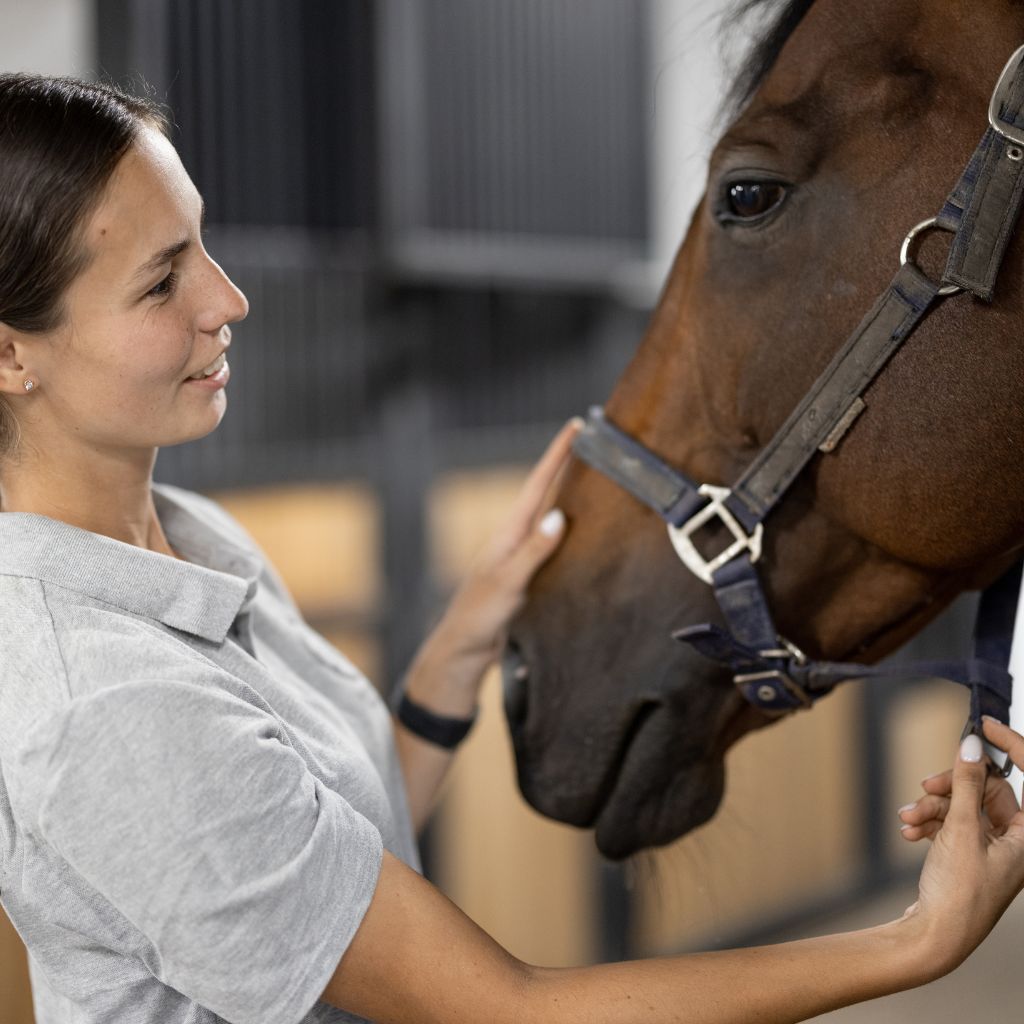The Equestrian's Guide to Horse Gastric Ulcers: Signs, Diagnosis, and Treatment
As a horse rider, you know your horse's health is paramount. But, what do you do when you suspect your horse is dealing with something as internal and complex as gastric ulcers? You turn to this comprehensive guide, that's what! Here, we'll demystify equine gastric ulcers and provide you with valuable information on identifying, diagnosing, and treating these pesky health issues. So, put on your comfy Jodhpurs and let's get started!
What are Gastric Ulcers in Horses?
Gastric ulcers are lesions that occur in the mucosa of the horse's stomach, varying in size, number, and severity. The mildest forms manifest as tiny superficial lesions with a bit of reddening and thickening of the mucosa. However, more severe forms can lead to large, multiple ulcerations in the mucosa, posing a serious threat to your horse's health.
What Causes Gastric Ulcers in Horses?
Under normal conditions, a layer of mucus protects the stomach's mucosa against gastric acid. But if the acid amount increases or the protective mucus layer reduces, the mucosa can get damaged. Some areas in the horse's stomach are naturally susceptible to erosion and gastric ulcers due to a lack of gland-producing mucus.
Several factors can predispose a horse to develop gastric ulcers, including:
- High grain/low roughage diets
- Restricted feed intake or periods of starvation
- Stress due to intensive exercise or physiological stress
- Certain medications, especially prolonged use of high doses of anti-inflammatories
Even foals can develop gastric ulcers at a very early age, commonly due to stress, diarrhoea or other bowel diseases such as impactions, prolonged time between feedings, infrequent nursing, or general illnesses and infections.
Common Signs of Gastric Ulcers in Horses
Identifying gastric ulcers in horses can be challenging as they may only show vague signs of discomfort or abnormal behaviour that could easily be attributed to other conditions. Some horses may not even show any signs despite having severe ulcers.
However, it's crucial to look out for some indicative signs. If your horse shows one or more of the following, gastric ulcers should be suspected:
- Unwillingness to perform as usual, including resistance to riding aids
- Picky eating habits
- Transient colic signs directly after feeding, particularly after high-grain meals
- Dullness or lethargy
- Low Body Condition Score
- Resistance to girthing
Young foals with gastric ulcers may show:
- Poor appetite or abrupt stopping in the middle of nursing, occasionally accompanied by pawing
- Signs of colic, including rolling on the back
- Diarrhoea
- Grinding of teeth and saliva dropping from the mouth
Can Ulcers in Horses Heal on Their Own?
Now, you might be wondering - can these ulcers heal on their own without any intervention? The short answer is, it's highly unlikely. Ulcers are a sign of an underlying imbalance in your horse's stomach environment, and simply hoping for the best isn't the wisest strategy. Prompt and appropriate treatment is crucial to heal these ulcers and prevent future occurrences. Equine gastric ulcers are not to be taken lightly; they can cause serious health issues if left untreated. So, always consult your vet if you suspect your horse may have ulcers.
How Do You Soothe an Ulcer in a Horse?
It's not enough just to treat gastric ulcers in horses, but it's also vital to make the process as comfortable for them as possible. You may not be able to slip them a pair of cozy riding boots or warm socks, but you can certainly follow these tips:
- Oral Medication: The vet might prescribe Omeprazole or Sucralfate. These medications reduce acid production and promote healing.
- Modify the feeding schedule: Introducing smaller, more frequent meals can help keep acid production under control. Ensure to offer a feed high in roughage 1-2 hours before exercise, as it creates a fibre layer over the mucosa, protecting the stomach.
- Alter the diet: Reduce high grain feed and replace it with good quality hay or haylage. Plenty of fresh, clean water should always be available.
- Changes in Management: Allow your horse as much time grazing naturally as possible, as this reduces stress and buffers the level of gastric acid. Also, consider a haynet during travel to limit acid production.
If your horse is in training and requires a high energy diet, consulting a nutritionist would be wise. A diet can be formulated to meet your horse's needs while preventing gastric ulcers. Supplements from our Everyday Horse Vitamins & Supplements collection can be a part of this diet plan, but always consult your vet before introducing any new supplement to your horse's diet.
How Do You Test for Stomach Ulcers in Horses?
Knowing the signs is one thing, but accurately diagnosing gastric ulcers requires a bit more than just observation. So, how do we test for these tricky stomach ulcers? The most reliable way to diagnose equine gastric ulcers is through a procedure called gastroscopy. Gastroscopy involves inserting a long, flexible tube with a camera down the horse's esophagus to view the lining of the stomach. While it might sound a bit daunting, it's performed under sedation to ensure your horse's comfort.
If you suspect your horse might be suffering from gastric ulcers, don't hesitate to contact your vet. While you're waiting, ensure your horse is comfortable. Perhaps give them some tender care, like brushing them with a new set of riding gloves or offering a comforting treat from our Horse Treats and Gifts collection. This will not only make your horse feel loved but also may help to relieve some of their stress.
What are the Stages of Ulcers in Horses?
Understanding the stages of ulcers can help you better manage your horse's condition. In the earliest stage, the horse may show mild discomfort and slight changes in behavior. As the ulcer progresses, the horse's appetite may decrease, and they may show resistance to riding aids or girthing. In severe cases, they might exhibit colic-like symptoms or a significant drop in performance.
Stages may vary depending on the location and type of the ulcer. The healing process, once treatment begins, also occurs in stages. The horse's behavior, appetite, and overall health should start to improve within a few days of treatment. Full healing, however, might take several weeks. It's crucial during this period to continue with the vet-recommended treatment and management changes to ensure complete recovery.
Conclusion
Being an equestrian isn't just about donning your favorite jodhpurs, pulling on your riding gloves, and hopping onto your horse. It's about understanding your equine partner and ensuring their health and comfort at all times. Remember, a happy, healthy horse is a joy to ride and an essential partner for every equestrian adventure.
Gastric ulcers are a common but serious condition in horses. Early detection, proper veterinary care, and changes in diet and management can make a significant difference in your horse's health and performance. It's essential to be aware of the signs and stay proactive about your horse's health. If you suspect your horse may have ulcers, consult your vet immediately.
At Just Horse Riders, we're not just about selling you your next favorite pair of riding boots or the most comfortable jodhpurs. We're a community of horse lovers dedicated to ensuring the best for our equine friends. Join us in our journey to better equine health and keep those tails swishing happily!




